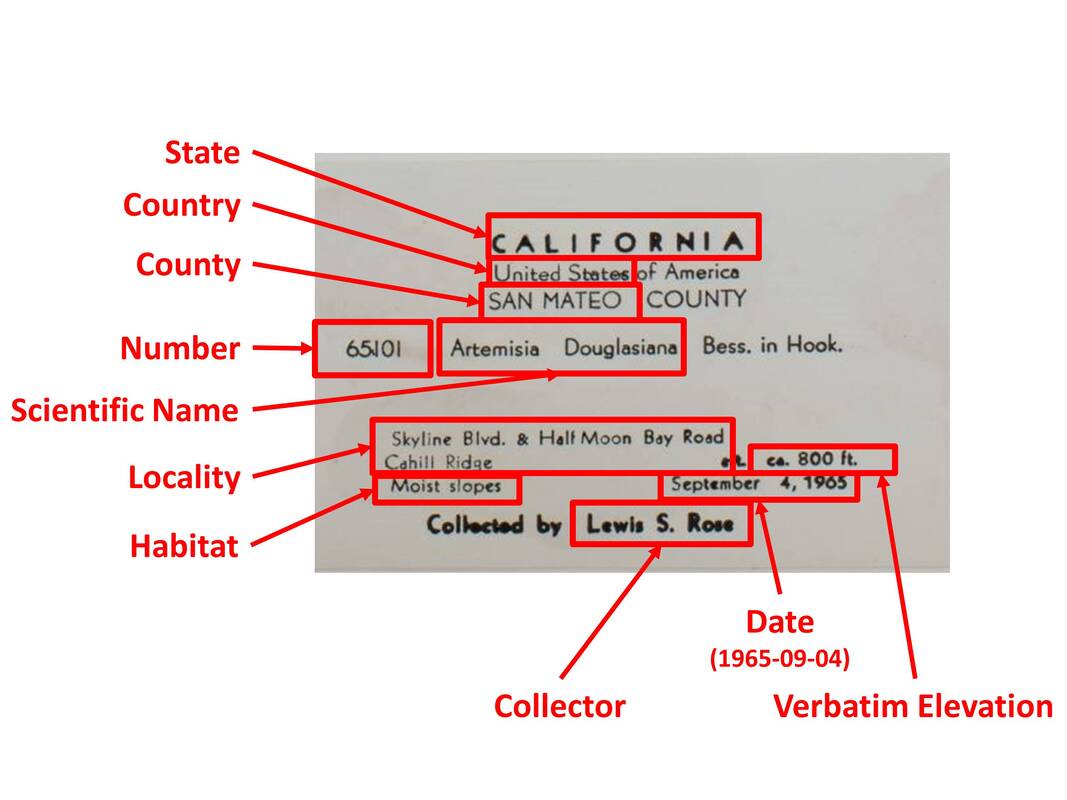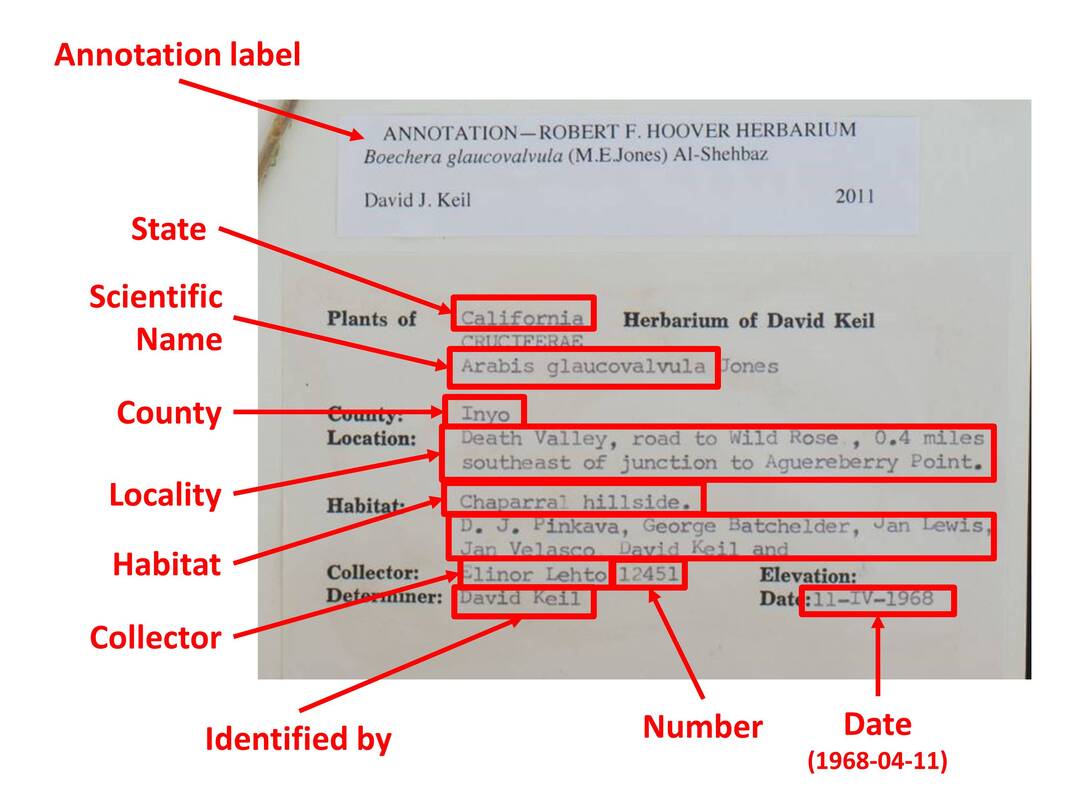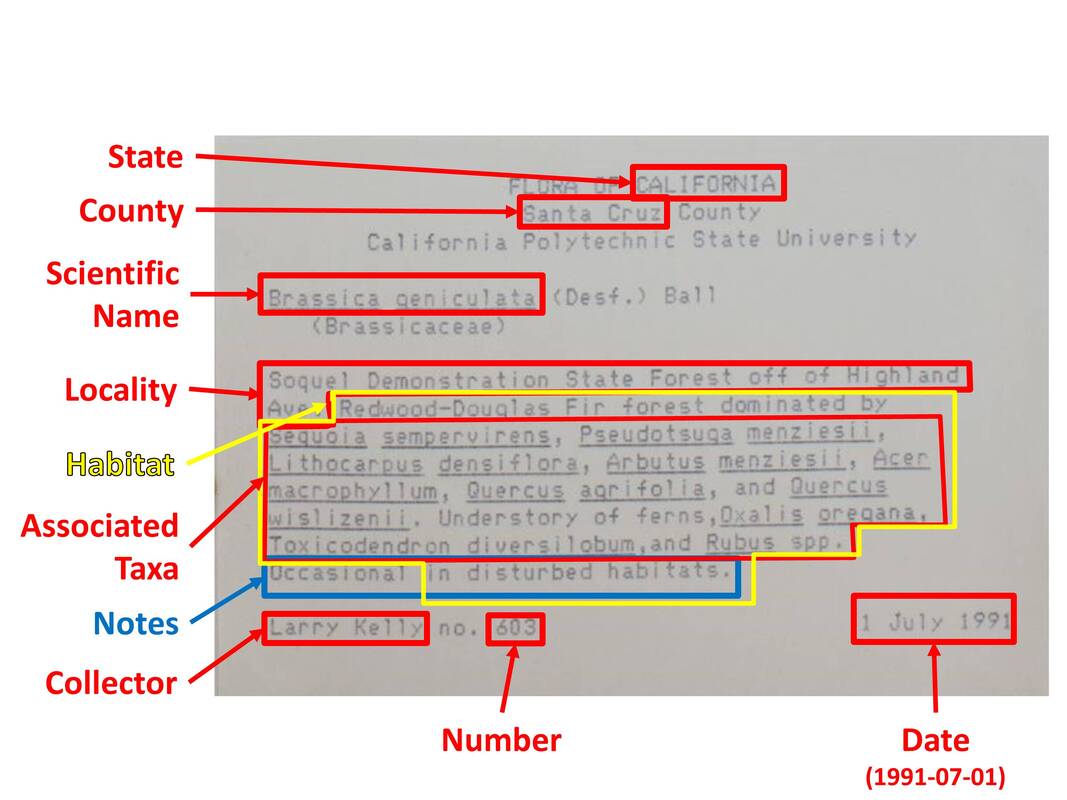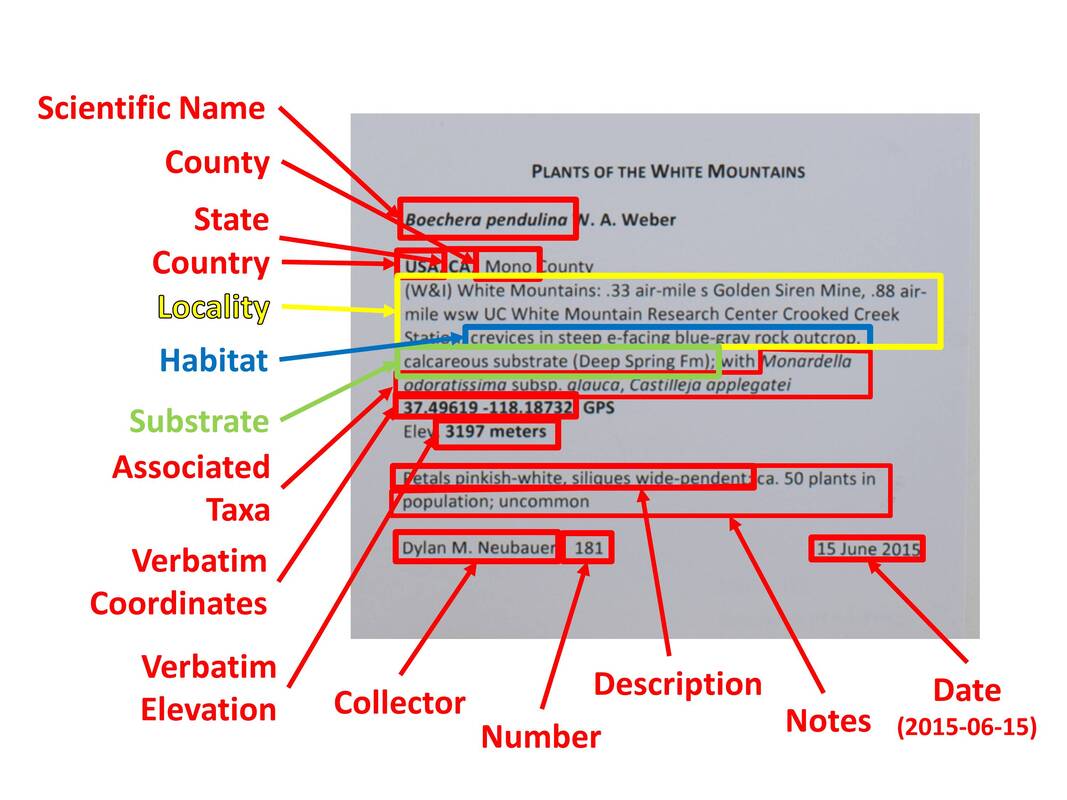Problem
Habitat and locality/location terms are mixed together, even within the same sentence.
Our Solution (adapted from the Notes from Nature blog)
- Often, general/non-specific locales are Habitat, and specific ones are Locality, since a species is very rarely found in only one place where the specimen was obtained.
- For example, “along road” would be Habitat because it describes the environment the plant grows in, but “along Smith Road” would be Locality as it describes the specific road where this specimen was found. However, you can also add "along road" to the habitat information, because it describes the type of environment in which the plant was found.
- For “Bank of Smith River”, “bank of river” would be put into Habitat and “Bank of Smith River” would be put in Locality.
- For example, “along road” would be Habitat because it describes the environment the plant grows in, but “along Smith Road” would be Locality as it describes the specific road where this specimen was found. However, you can also add "along road" to the habitat information, because it describes the type of environment in which the plant was found.
- Separate phrases by semicolons or periods, as long as it does not change the meaning of the text.
- Drop unnecessary dangling non-terminal punctuation as needed. For example, “Dry roadside, east of Smithville” would result in “Dry roadside” Habitat, dropping the dangling comma as it is doesn’t terminate a sentence properly.
- Data that goes into Habitat:
- Floodplain describes a habitat. This often occurs with a river name, so for “Mississippi River floodplain”, include of the text in the Habitat field. Since in this case it wouldn’t be accurate to just have “Mississippi River” in the locality field.
- Power lines: as they may help narrow a location but say more about the habitat in which the plant grows as power line corridors are usually cleared of larger shrubs and trees.
- Data that goes into Locality:
- Directions to get to a location or the human-given name of that location. For example, towns, roads, mountain ranges, distances, directions, or other descriptive information should go in the Locality field.




